By Silvia Galliani
Powered by Nike
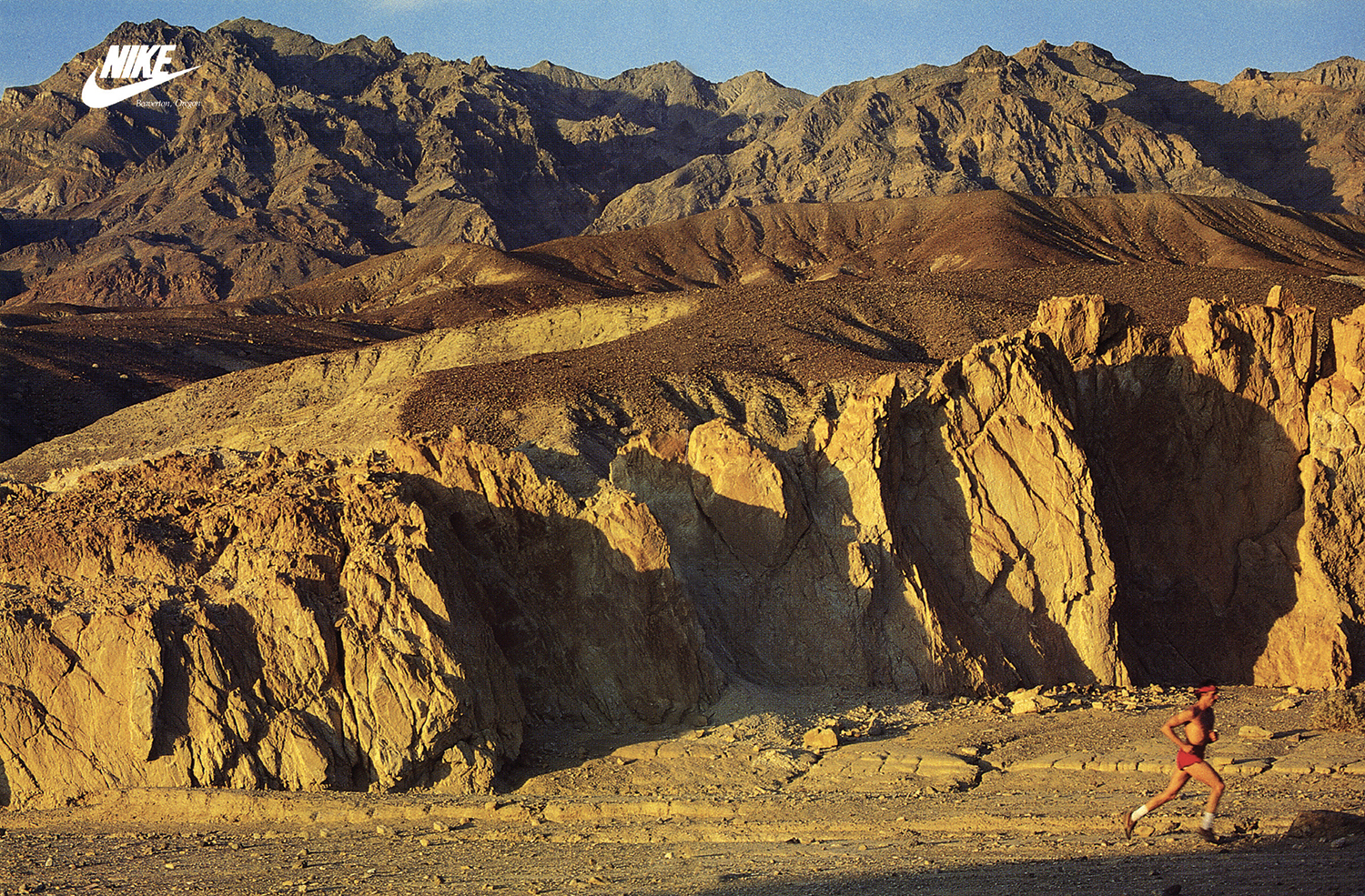
Nike, a trail running story
Nike’s trail running history started in 1978 when a team of America’s best mountaineers hiked to basecamp, on the world’s second-highest peak K2, wearing Nike runnings shoes.
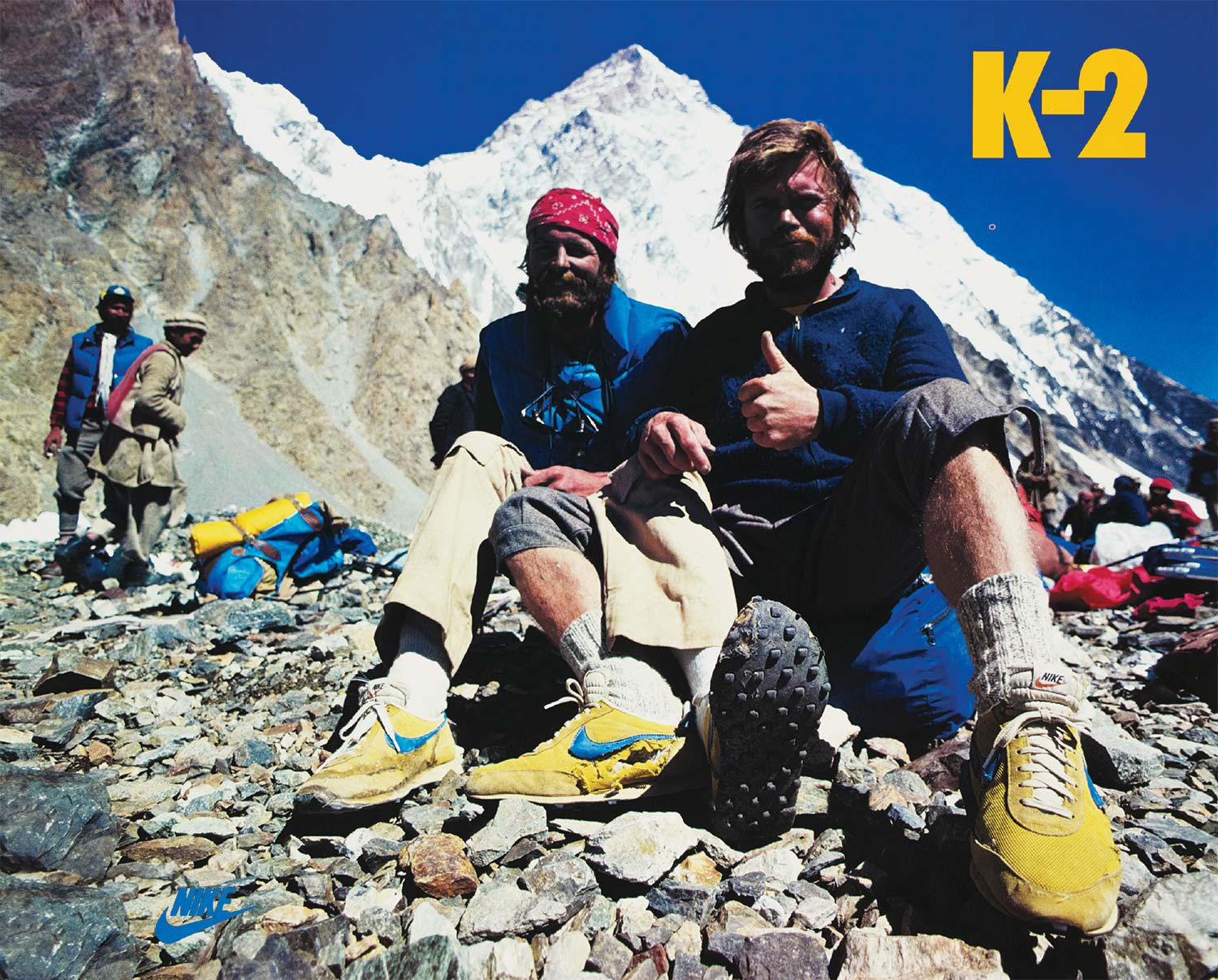
In fact, Nike’s first true trail running shoe was born almost unitended. In 1978, John Roskelley and Rick Ridgeway were among the members of the first American expedition that reached the top of K2 unassisted by oxygen. Nike decided to donate $10,000 to their project despite not yet having a line of outdoor or trail product, on the other hand it provided everyone with a pair of its newest running shoes, the Nike LDV, for the 110-mile hike to basecamp. The LDVs were light and comfortable, as opposed to traditionally heavy, leather hiking boots. The trail for the approach and decent hiking was pretty rough. The hikers found that the LDVs breathed better, were more comfortable and the increased flexibility made them function better than a more traditional trekking boot. Roskelley and Ridgeway came back enthusiastically from the expedition with many suggestions for Nike on how to adjust designs for lightweight hiking shoes. Back in the days, Mark Parker, footwear designer and trail runner enthusiast, was looking for unique running shoes for the discipline he loved. He was the one who designed the company’s first official trail running shoe, tested by trail runners. From the beginning, Nike has had all the right components to bring to trail running: lightweight with traction, materials innovation, lockdown, ergonomic lacing. But we we should wait until 1984 to have the first shoe specifically designed for an outdoor/trail use. We are talking about the Nike Escape model designed by Mark Parker himself. Trail running was emerging, and Parker and his fellow trail runners were wearing the sturdiest shoes they could find, which at the time were stability shoes.
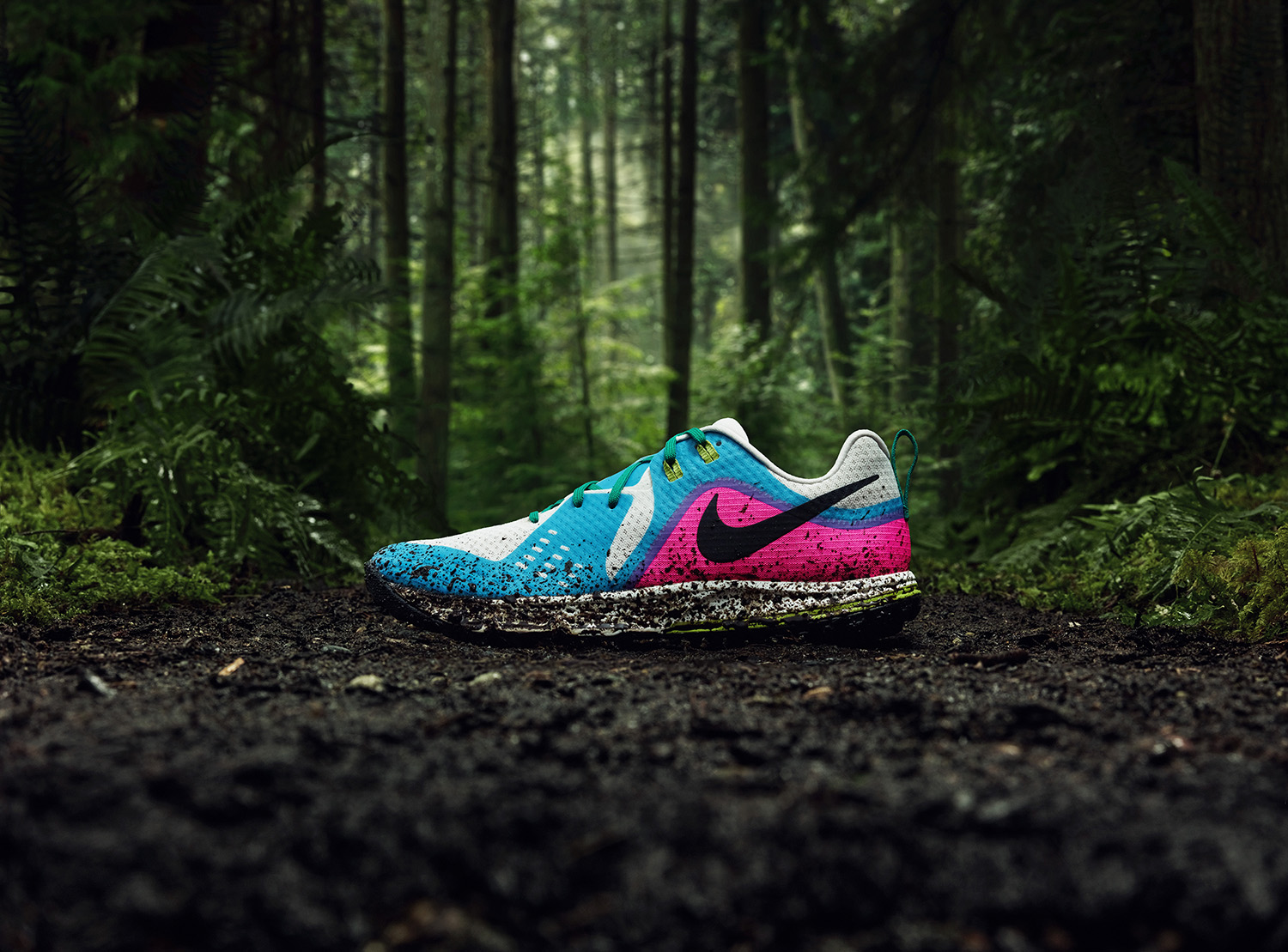
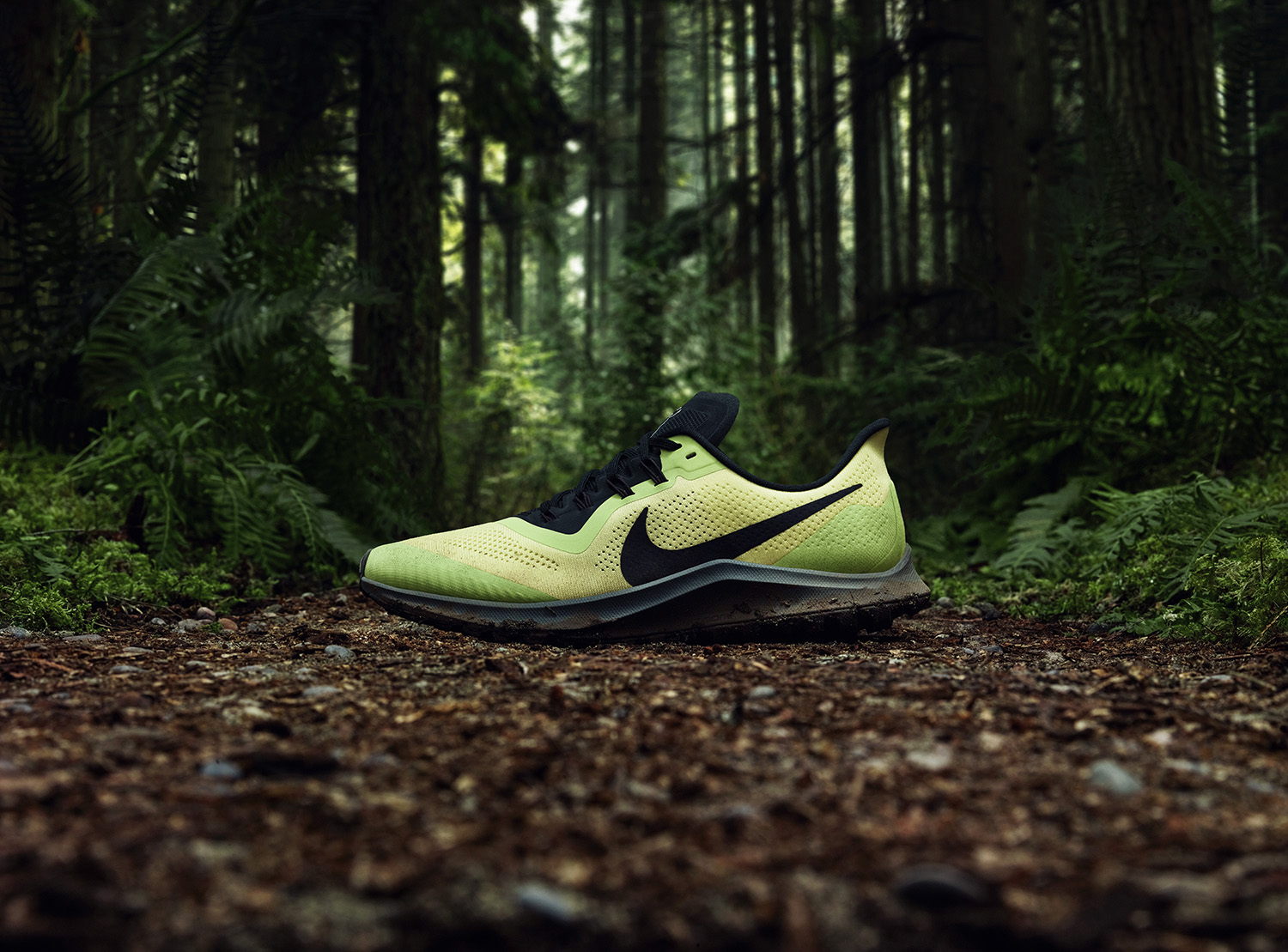
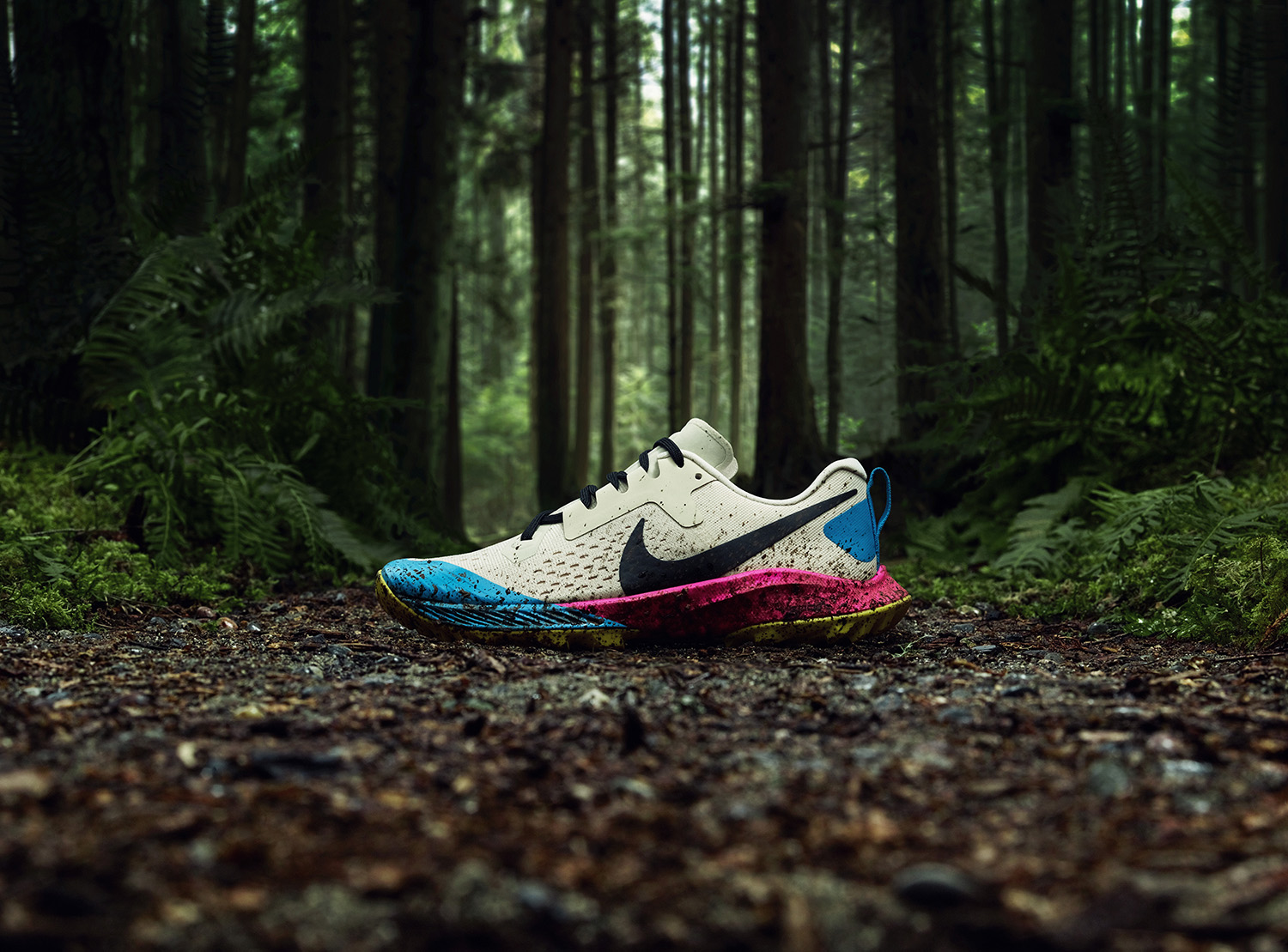
“I literally laid paper out on the hood of a car and sketched the shoe” Parker explained later. He applied the learnings from the Pegasus, which he had recently designed, adding a heavier outrigger and more durable upper to the Escape. Parker realized some samples and passed them out to a few fellow trail runners who immediately loved them. After earning those the rave reviews, the Escape was dropped into the line for the following season. In a few years trail running grew as a sport and athletes needed a more serious off-road shoe. In 1989 Nike launched his second model specifically designed for this discipline. The Nike Air Wildwood ACG unlike the Escape, differed for its bright colors by presenting a sole built for rough terrain and an entirely synthetic upper perfect for rain and mud. The materials were light, ideal even in wet conditions, while the micro-perforated panels ensure breathability. In 1993 it was the turn of Nike Air Pegasus RD that combined the best features of the Air Pegasus model with greater robustness ideal for outdoor environments. Incorporating waterproofing materials, beefing up the outsole and reinforcing the toe, the Pegasus RD was the ideal shoe to go from the road to the trails. In 1997 Nike Air Humana, designed by the famous designer Peter Fogg, was the first trail shoe to incorporate a fabric wrap around the midsole. Highly innovative the fabric midsole provided an abrasion resistance sidewall and stability. The forefoot flex grooves provided maximum flexibility combined with the bidirectional traction configuration provided support during steep uphill or downhill runs. The Air unit in the heal and the forefoot Zoom Air made it a highly comfortable cushioned shoe, comfortable on the trails as well as the city streets. The Nike Air Terra Sertig and Air Terra Albis models, also by the same Peter Fogg, are from the same years. The first model combined elements of a trail running shoe with a hiking boot, thanks to the abrasion-resistant tip and mudguard and heel breathable mesh upper. Very low profile midsole with the Zoom Air unit in the forefoot and a large volume Air-Sole unit in the forefoot, combined with the special podular construction, offered stability allowing the foot to react and respond to uneven surfaces. Air Terra Albis had the same characteristics but available in a low cut version.
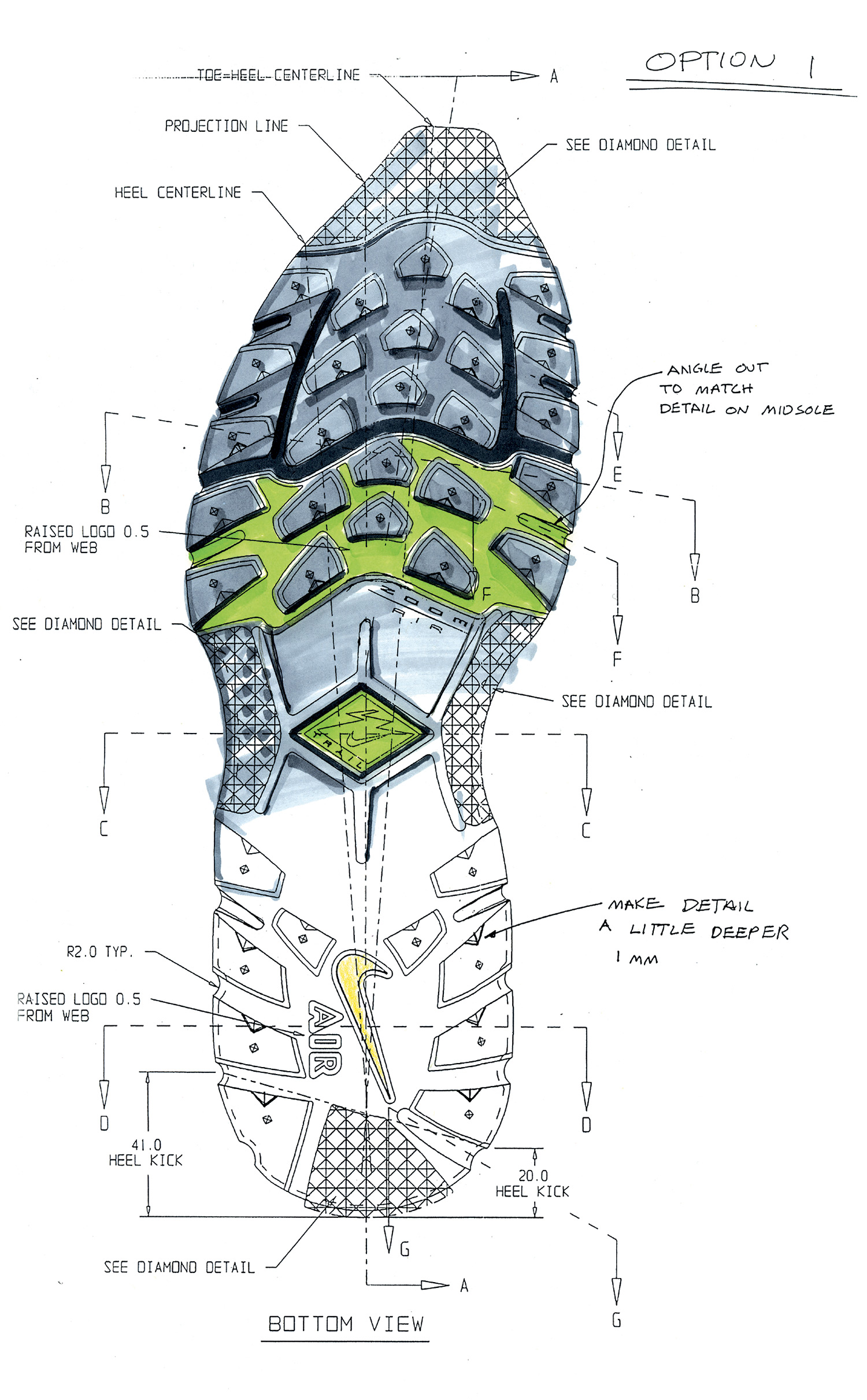
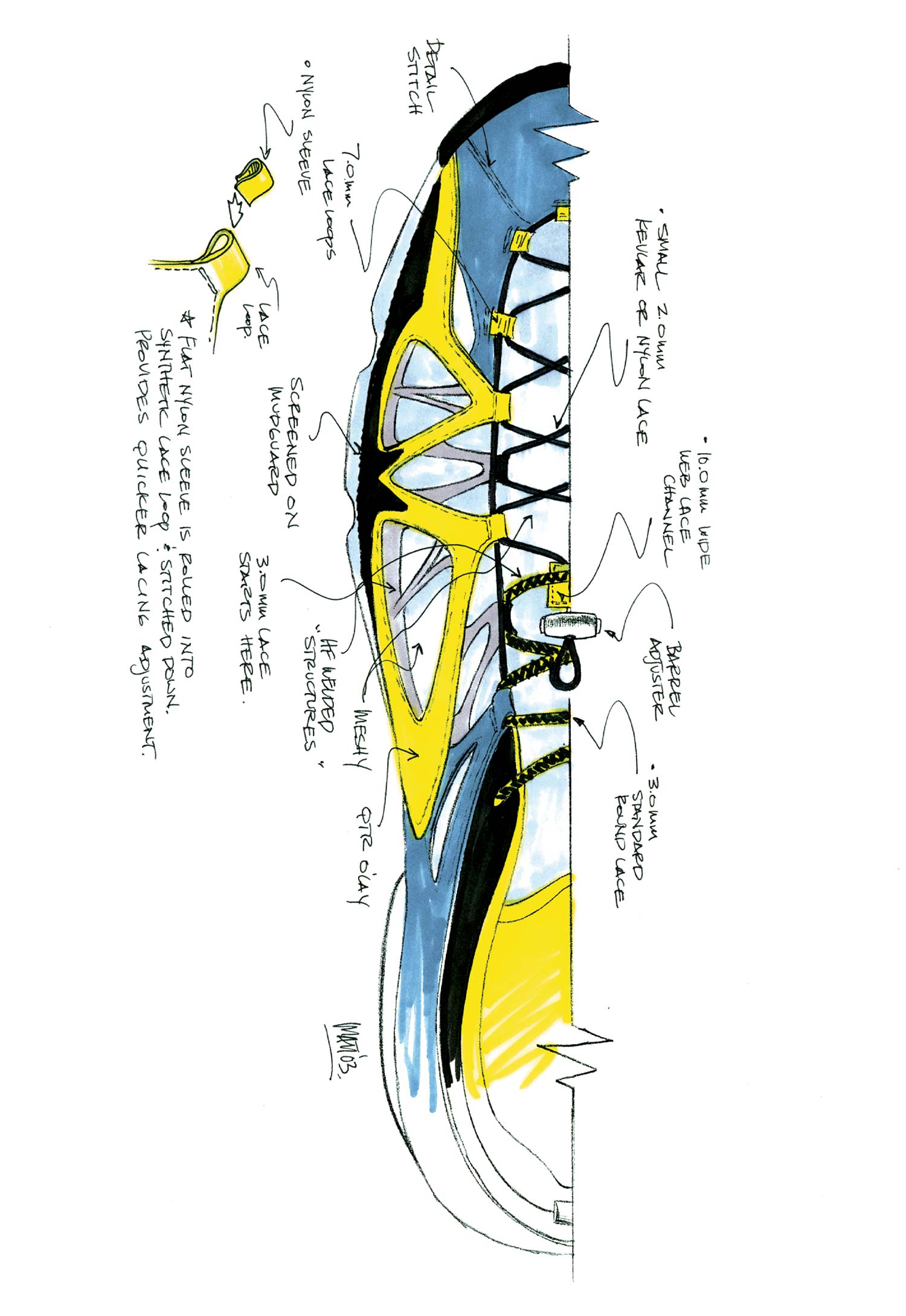
Last to close the millennium was the Nike Air Terra Goatek, in 1999, which featured a unique and innovative outsole technology called G-Tek sticky rubber. The sticky rubber was constructed into pads, a pattern that resembled the hoofs of a goat climbing steep mountain cliffs, from which the name Goatek also comes from. The shoe also featured a full heel to toe medial posting and an upper resistant to water and abrasion. In 2005 Nike Air Orizaba ushered in a new era of Nike Trail Running. This shoe was named after Pico de Orizaba the highest mountain in Mexico and the thrid highest in North America and featured innovative materials like Gore-Tex XCR which created exceptional waterproofing and was laminated so as not to impact breathability. Zoom Air units in the heel and forefoot made for a super runnable shoe with ample cushioning and shock absorption. Let’s arrive to nowadays with the Nike Air Zoom Terra Kiger and Nike Zoom Terra Wildhorse models now in their fifth edition.
The Nike Air Zoom Terra Kiger 5 is a shoe designed to be used on difficult and rocky terrain, thanks to the multi-directional fins with a clear and decisive shape and the soft rubber tread that facilitate contact with the trails and offer greater traction on wet surfaces. The perforated upper removes moisture and allows greater breathability. Nike Zoom Terra Wildhorse 5 is a trail shoe designed to offer maximum comfort, lightness and stability. It ensures an ideal gait on rough terrain, thanks to the multilayer and breathable fabric. The sturdy flat sole protects the foot, while the Zoom Air unit in the heel cushions the step on trails and dirt roads. Up to date it is probably the best known trail running shoe from the Oregon company and the preferred choice for mountain runners.
Last addition to the Nike Trail family is the Pegasus 36 Trail. With a renewed look and new performances, Nike’s most versatile crossover returns for the first time in several years. The Nike Air Zoom Pegasus 36 Trail takes inspiration from the legendary Pegasus model and presents the same shape, the same fit and the same feeling as running on roads. The perforated mesh upper ensures comfort and breathability, while the Zoom Air units cushions the pace. Finally, the lugs on the sole ensure maximum traction for the uphill run. The perfect arrival point of a story that began many years ago thanks to the love for outdoor life that has always distinguished the brand’s DNA and that contributes to making Nike what it is still today.
Share this Feature